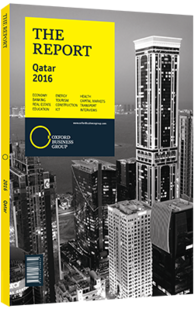Qatar's investment arm streamlines its strategy
After facing setbacks in 2015, Qatar’s multi-billion-dollar sovereign wealth fund, the Qatar Investment Authority (QIA), is implementing a new strategy aimed at diversifying its asset base and restructuring its internal operations, with an increased focus on investments in the US and Asia. As the state continues to grapple with volatile energy markets and the declining performance of some of its major blue-chip investments, the new strategy is expected to reduce volatility, balance the state’s non-hydrocarbons portfolio and improve decision-making processes.
Big Money
Established in 2005 by the Supreme Council of Economic Affairs, the QIA benefitted from being one of the few sources of capital available to stressed sellers in the wake of the 2008-09 global financial crisis. The US’s Sovereign Wealth Institute estimated the QIA’s holdings at $256bn in June 2015, making it the 15th-largest fund in the world. In September 2015 the London-based Sovereign Wealth Centre estimated the QIA holds about $334bn worth of assets. Until recently, the QIA’s investments have focused largely on European real estate and bluechip companies, which made up an estimated 80% of its assets. In January 2015, for example, the QIA partnered with Canadian property group Brookfield in the £2.6bn acquisition of London’s Canary Wharf. In November 2015 it invested $104m to acquire two properties, including the Citadines Suites Champs- to convert the building into luxury serviced apartments. The QIA also holds stakes in London’s Shard skyscraper and Harrods department store.
Ups & Downs
However, 2015 was a difficult year for the authority. The QIA owns a 17% share of Volkswagen’s ordinary shares and 12.8% of its preference shares, meaning it was significantly affected when the German automaker’s emissions scandal broke in mid-September 2015. Reuters reported that the QIA lost $5.8bn between September 18 and 30 alone as a result of declines in both Volkswagen and Anglo-Swiss mining and commodities firm Glencore, in which it holds an 8.2% stake. The Financial Times reported in the same month that the fund lost $12bn during the third quarter of 2015. As the global economy continues to face challenges, the QIA is seeing stronger competition from other funds as it moves to diversify its non-hydrocarbons assets, while lower global oil and gas prices have reduced the amount of capital available for big-ticket investments.
New Strategy
In June 2015 the QIA unveiled a new investment strategy that sets asset allocation targets for the first time, in addition to restructuring its internal decision-making process. Reuters reported in September 2015 that the review will enshrine formal asset allocation targets based on geographic location and sector, ending what had been a somewhat scattered approach. The new targets are expected to see the authority avoid or exit areas such as food and mining where it overlaps with Qatari investors including Hassad Food and Qatar Mining. The strategy also entails allocating more capital to third-party fund managers, devolving power from top management to lower-level managers, and focusing on passive investment strategies, which will reduce volatility and provide a more stable investment outlook.
East-West
The QIA is also now shifting its focus to North America and Asia, where up to $55bn in new investment is expected in the coming years. In Asia, for example, the authority has earmarked $15bn-20bn for investments in financial services, infrastructure and real estate. Weeks before unveiling its new strategy, the QIA announced plans to invest $1bn in a 20% stake of Hong Kong utility investment trust HK Electric, after investing $1bn for a 22.8% stake of Hong Kong retailer Lifestyle Holdings International in December 2014. In November 2015 the QIA acquired Tokyo’s Somerset Shinagawa, a serviced luxury apartment building, as part of a $104m property deal.
You have reached the limit of premium articles you can view for free.
Choose from the options below to purchase print or digital editions of our Reports. You can also purchase a website subscription giving you unlimited access to all of our Reports online for 12 months.
If you have already purchased this Report or have a website subscription, please login to continue.

